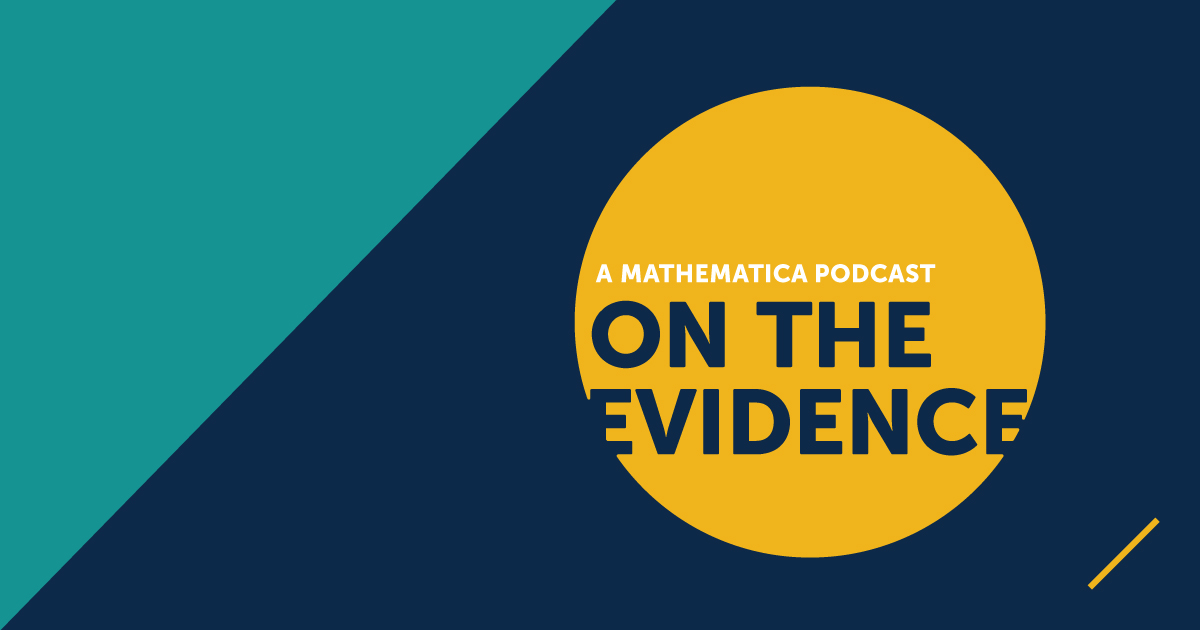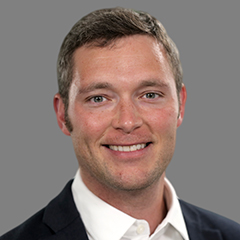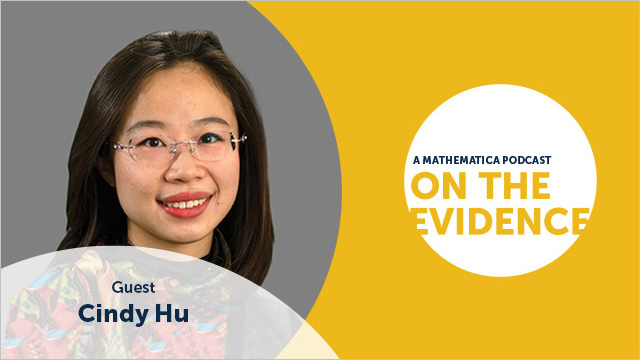Last month marked the two-year anniversary of On the Evidence, a podcast I helped launch at Mathematica. As regular listeners already know, the premise behind the show is that understanding and confronting collective problems requires reliable data and evidence gathered in the most careful, rigorous way possible. Plenty of podcasts plumb the social sciences to explain the news or explore interesting questions about the way our economy works. Not many have the explicit agenda of improving public well-being by sharing evidence-based insights with decision makers in the public and private sectors.
In that sense, On the Evidence belongs to a nascent, evolving subgroup of podcasts about research and data. Hosts like me are still figuring out how to reach their intended audiences and how to make their shows as useful as possible. After 24 consecutive months of interviews with 122 guests, I thought it might be helpful to contributors in this emerging field of social science podcasts to share what I’ve learned.
Shorter isn’t always better
I remember discussing the idea of a podcast during my job interviews at Mathematica in 2018. I know my intention then was to emulate the brisk, tightly edited shows I was enjoying each morning. I am a regular listener and long-time admirer of The Indicator and Short Wave, two National Public Radio programs that explain complicated subjects (economics and science) in a fun, conversational format. Both clock in at about 10 minutes per episode. Although I was open to experimentation, my intuition was that shorter episodes would be more popular, because listeners hungry for new evidence-based insights might not have the time or appetite to hear more in-depth discussions about findings and their implications.
Our data suggest I was wrong. Among our five most popular episodes, two were on the shorter side at 16 minutes in length. But three were longer than 40 minutes. In 2020, the two longest episodes (56 and 79 minutes) were also the most played episodes of the year. Of course, long episodes aren’t always better. But I’ve learned that if the topic is interesting and the guests have a lot to say, it’s counterproductive to spend hours in the editing room, cutting a minute here and a minute there, just to reach an ideal target length. It’s better to trim the fat and let the rest stay, even if it means more minutes than you originally intended.
Podcasts are a great way to combine personal storytelling and research
I suspect one reason some of our longer episodes do better is because those episodes tend to go beyond research findings and policy implications. When I was surveying other podcasts that might serve as models for On the Evidence, one of the shows I kept coming back to was The Story Collider, which features true, personal stories about science.
A few months into our podcast’s launch, I decided to bake a little bit of The Story Collider into our show. Whenever possible, I would ask guests how they became interested in their research area. Did they have a personal connection to the topic? What made them want to devote a year, a few years, or even a career to a subject? My decision paid off.
Cindy Hu, who had published papers on pervasive and long-lasting chemicals in tap water, shared that her interest stemmed from childhood memories of her parents in China needing to boil tap water—even on hot summer days—to make it safe to drink.
In an episode about the need to fulfill the promise of electronic health records, Llew Brown talked about his experience as a clinical nurse. Phone lines were often so busy at his hospital, the only way he could order medications for his patients was by leaving the orthopedic unit on the ninth floor and visiting the pharmacy in person in the basement.
Patricia Rowan, who conducted an assessment for the state of Connecticut about why COVID-19 hit its long-term care facilities so hard in the spring of 2020, shared that her family had lost a grandparent to the disease. She described how this loss made her feel an obligation to those who had died to help prevent deaths in the event of another outbreak.
The format of published public policy research typically does not provide authors the space to mention why the work matters to them personally. On a podcast, leaving room to explore that question can enrich the conversation and help listeners better understand the human and emotional stakes involved.
If you build it, they will come
As I was developing the podcast that would become On the Evidence, I had to recruit guests to record interviews for a show that didn’t exist yet. Fortunately for me, most ultimately said yes. Over time, people understood what the show was, how their work might be presented, and how I performed my role as a host and interviewer. By the end of the first year, the direction of pitches finally started to change. It’s a little bit of an oversimplification to say that once we built the podcast, the guests came. But once we launched, made monthly tweaks to improve the show’s quality, and maintained a steady output for a year, the guests did come.
Podcasts can build a sense of community in your company
I intended the podcast to be an external communications tool to connect Mathematica with outside audiences. What I didn’t expect was how the podcast would also facilitate connections within our organization. The podcast brings together experts across projects, business units, and disciplines, enabling people who might not have had a good excuse to talk otherwise to meet and discuss their work. Anecdotally, I’ve also heard from listeners within the company that the podcast helps them stay abreast of their colleagues’ late-breaking and cutting-edge work.
Mathematica has more than 1,400 employees spread out across eight offices in the United States, from Oakland, California, to Washington, DC. Even before the pandemic, several hundred of those employees worked from home. It makes sense that a podcast might be a convenient way to learn more about co-workers on other projects, in other units, or in other parts of the country.
Of course, I still want On the Evidence to reach listeners outside of Mathematica who can use evidence in ways that improve people’s lives. But I’ve learned that as I seek to inform those external listeners, I’m lucky to have a base of supporters within my organization who are tuning in regularly and finding value in the show for reasons I didn’t expect.
We want to know more about who listens to the podcast
Speaking of who listens to the podcast, almost every prospective guest asks, “Who is your audience?” After all, if we knew who was downloading episodes each month, it would guide our decisions about what to feature on the show and how to feature it. Do we have policymakers wanting more practical recommendations on how to link evidence to legislative action? Do we have government and philanthropic funders who want more information on how they can support the replication or scaling up of proven solutions? Do we have journalists looking for expert sources and story ideas? Or maybe most of our audience is made up of researchers who are interested in what their peers are up to and would like more technical discussions about methods and knowledge gaps.
The truth is, our current listening data aren’t very illuminating. That’s why we are launching a listener survey this month. If you have listened to at least one episode of the show, please go to https://www.surveymonkey.com/r/ontheevidence and take our survey.
As we enter the third year of On the Evidence, I look forward to uncovering more insights about some of the most pressing challenges facing humanity, and what the data suggest is most effective in addressing them.



